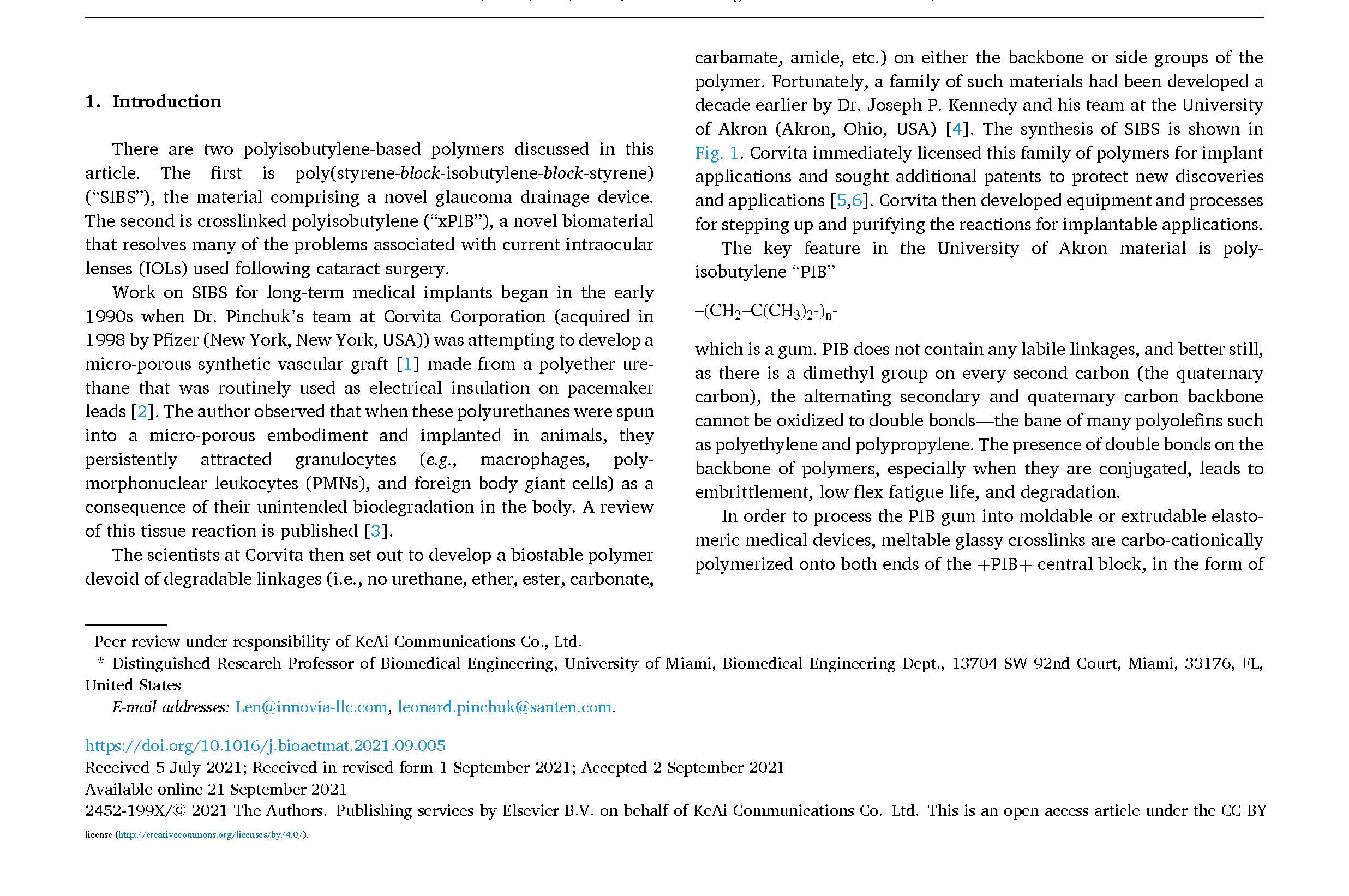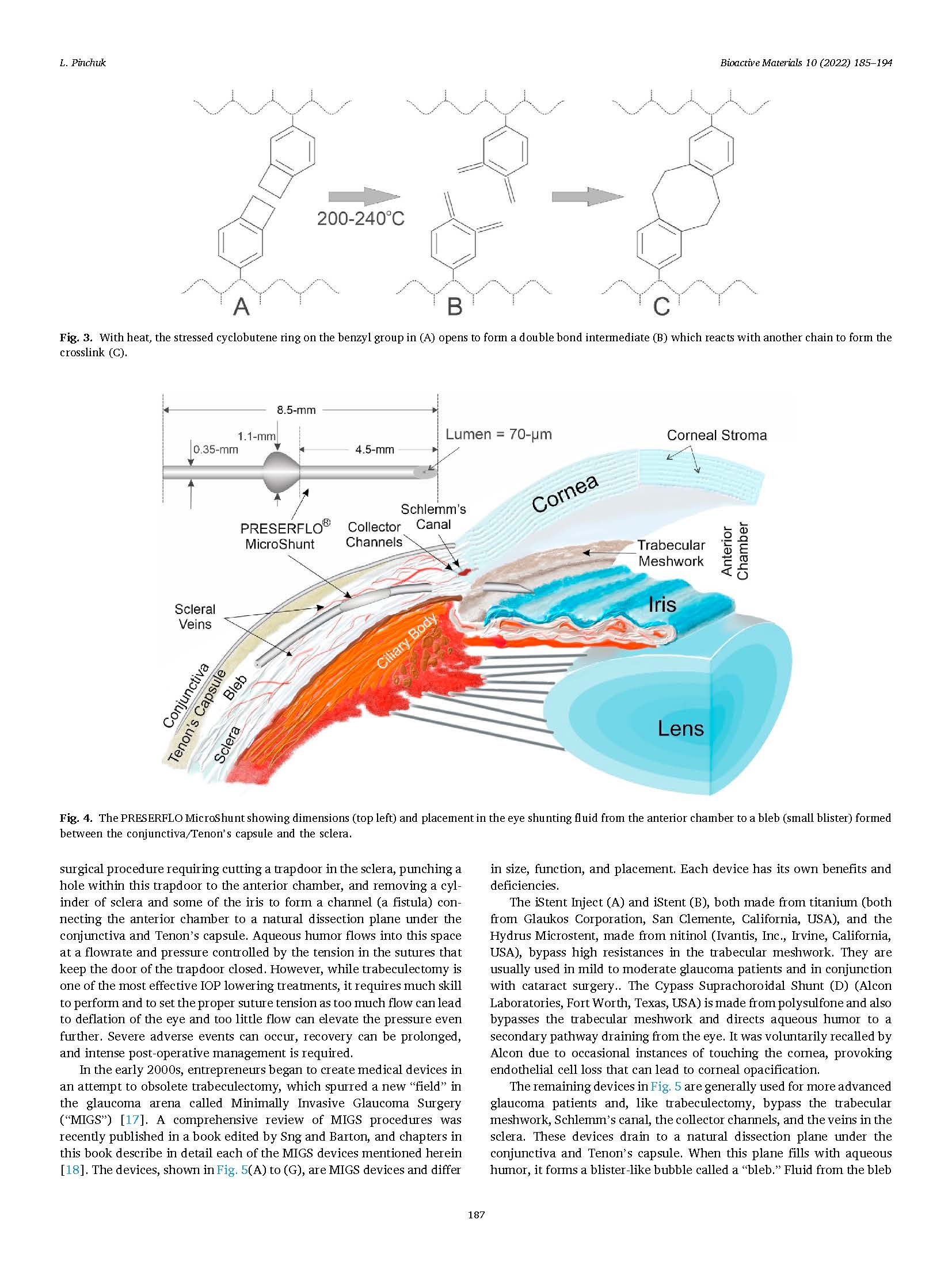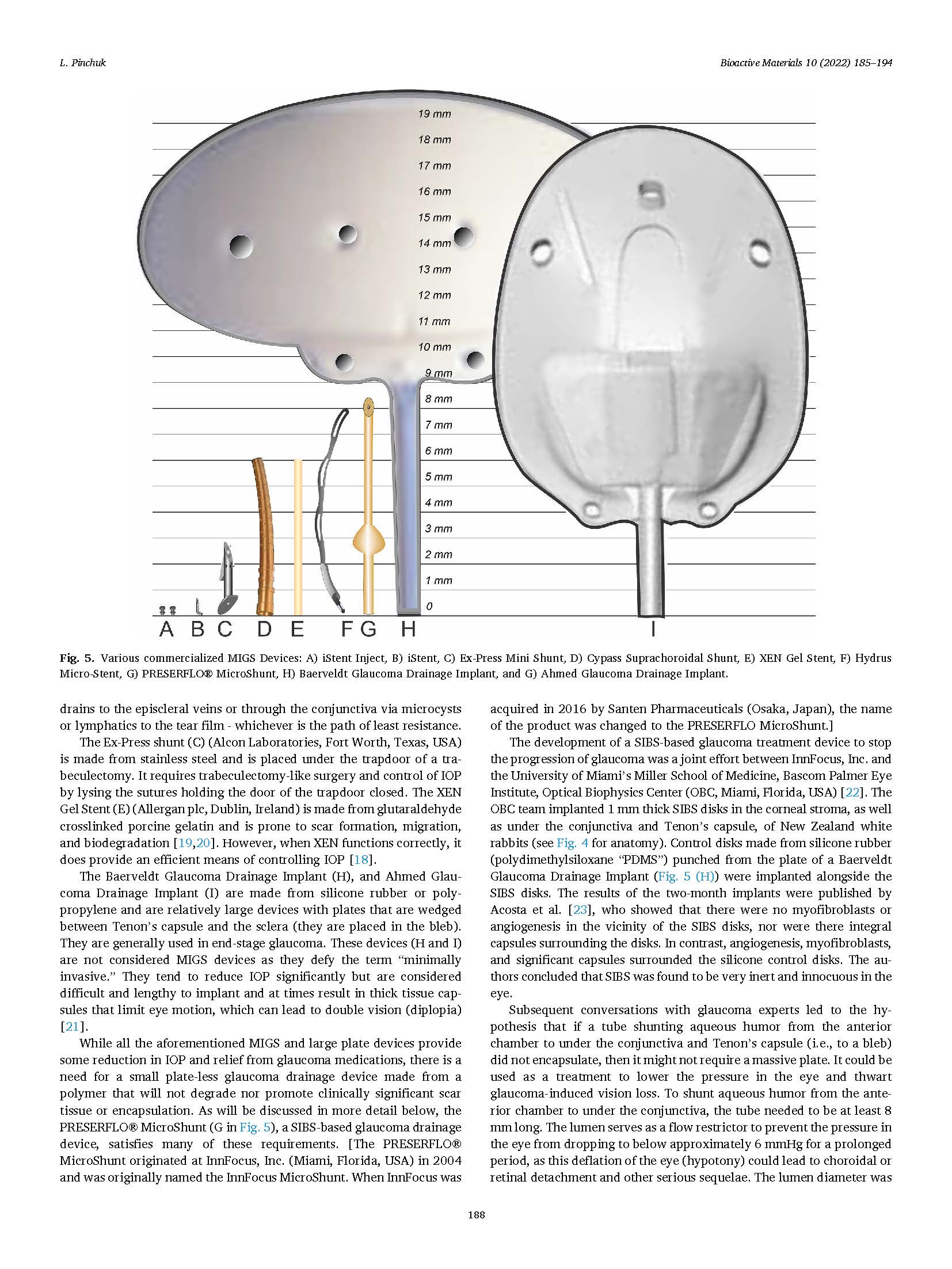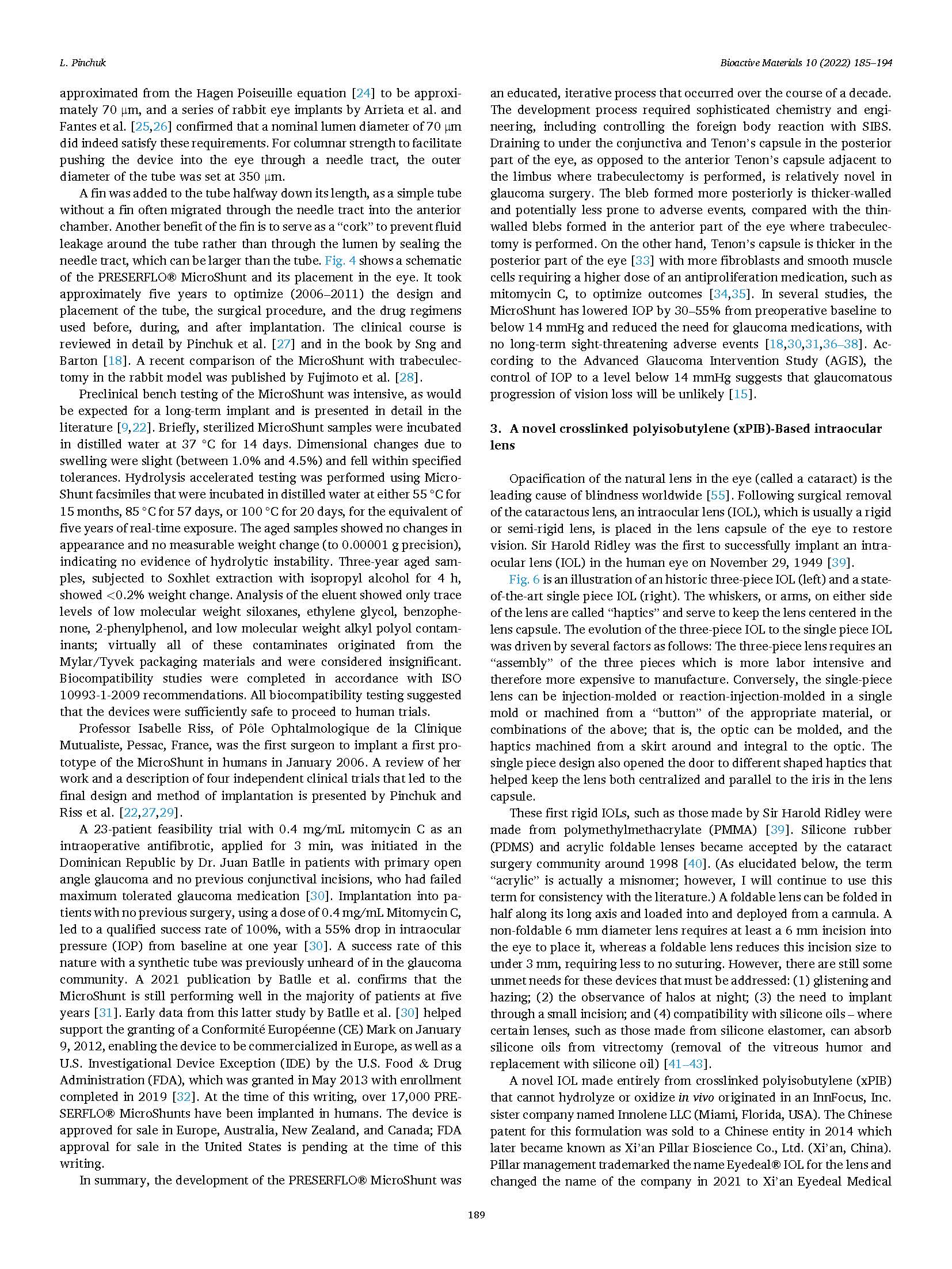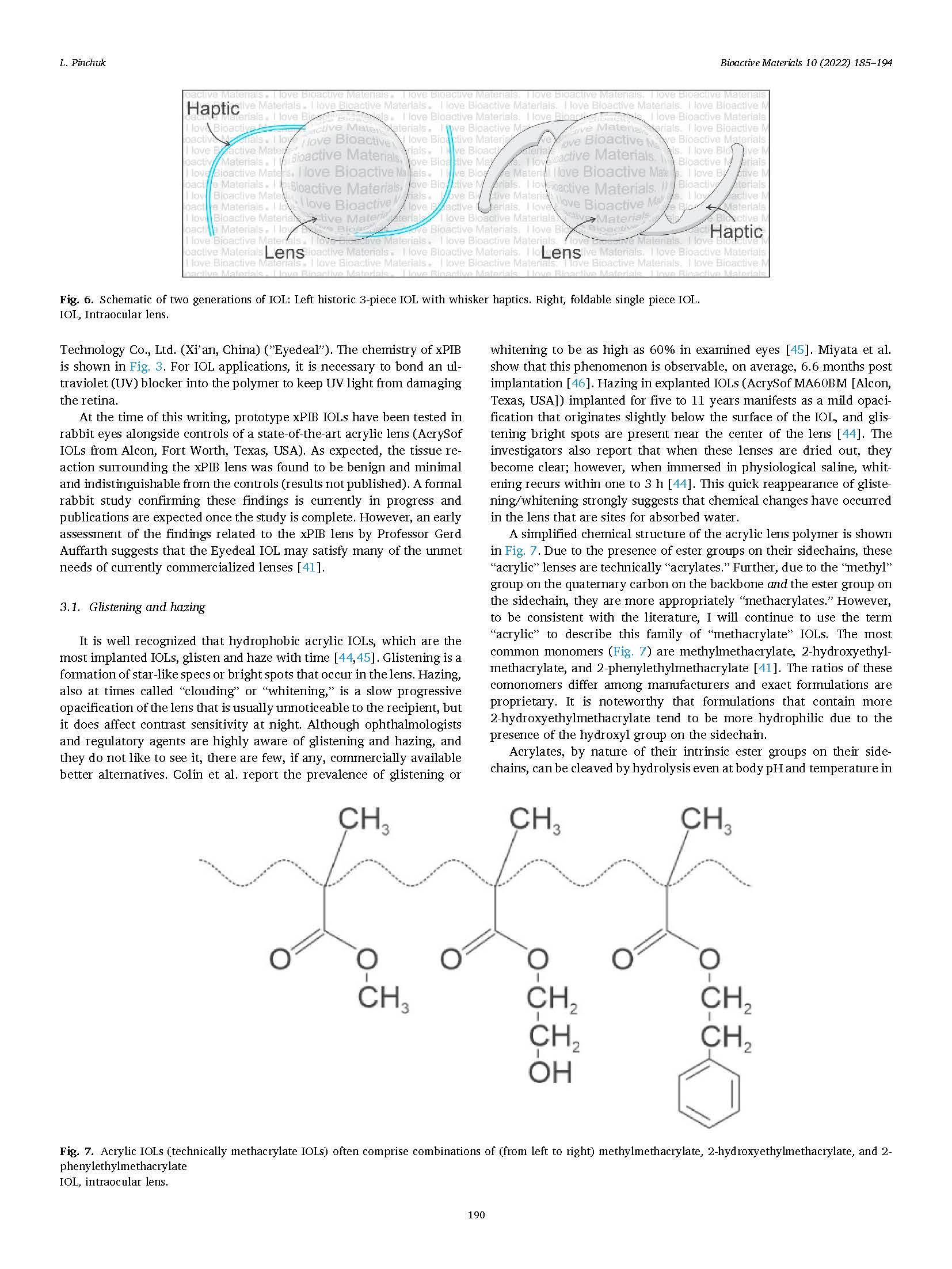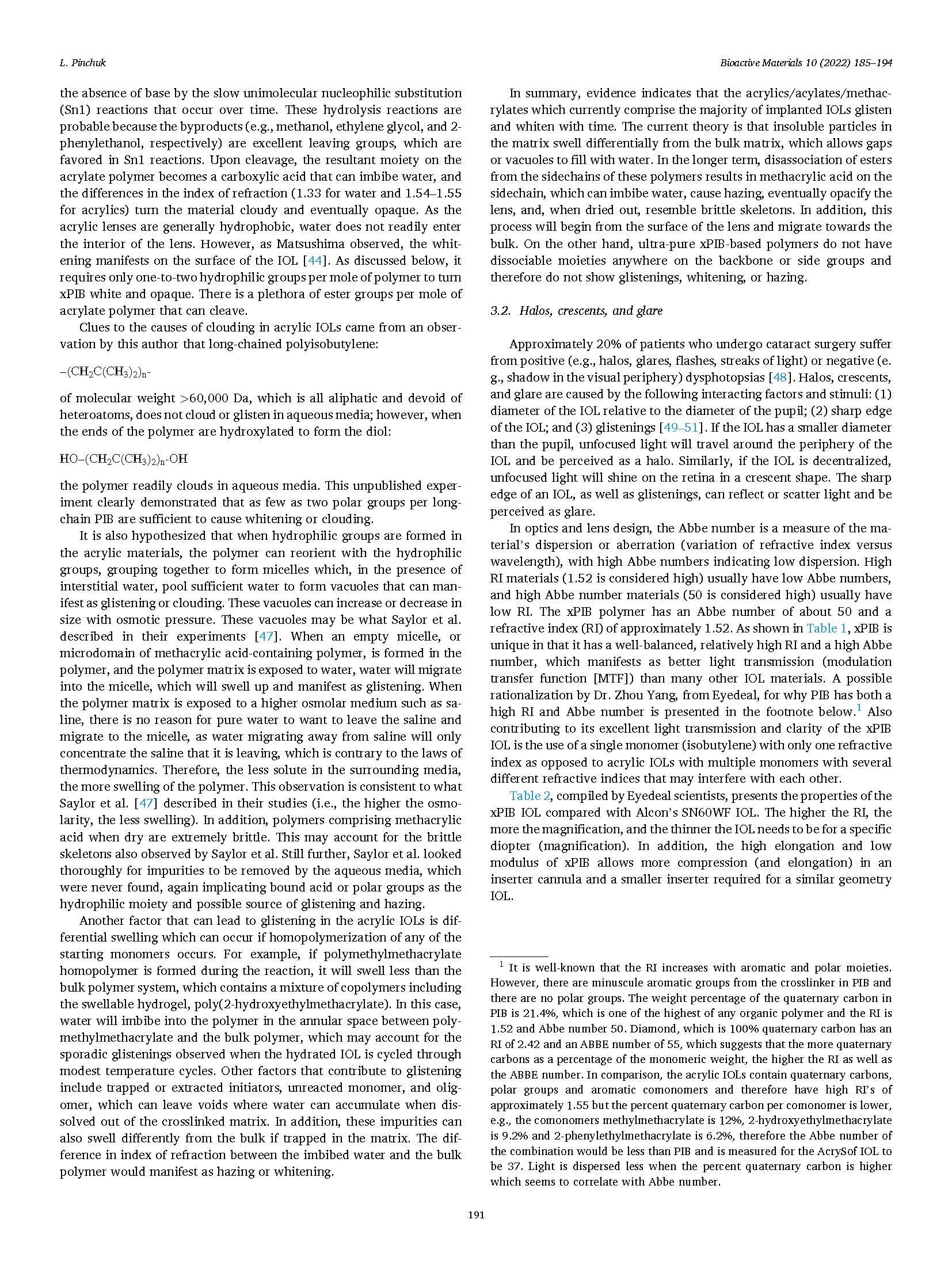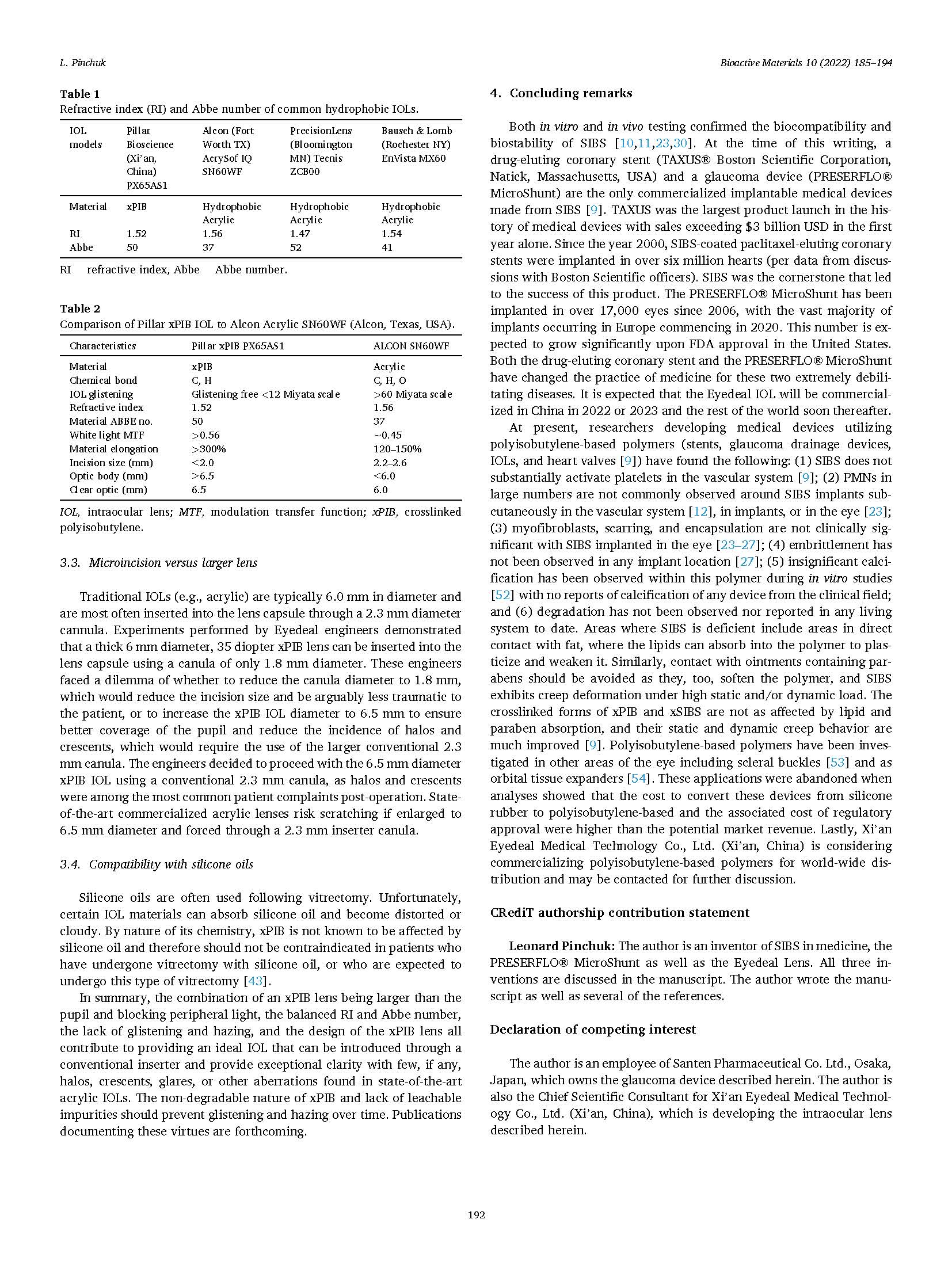Paper Published in Leading International Journal Bioactive Materials Highlights the Advantages of SIBS and xPIB in Ophthalmic Applications
Editor’s Note:
Polyisobutylene (PIB) is a flexible polymer that, when copolymerized with certain common monomers, can form potential biomaterials with excellent biocompatibility and low inflammatory response. Both styrene-isobutylene-styrene block copolymer (SIBS) and cross-linked polyisobutylene (xPIB) belong to the family of PIB-based materials. Each of these materials offers unique advantages across various application scenarios due to their exceptional properties.
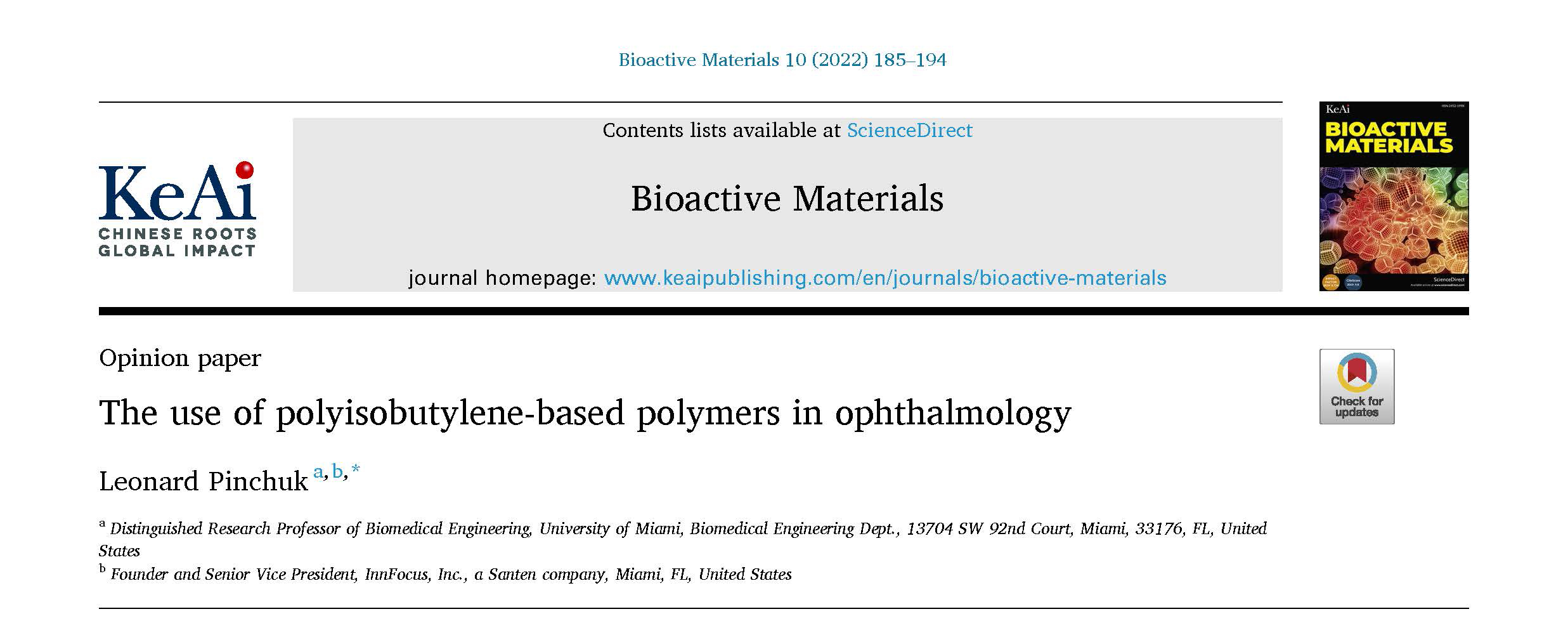
Bioactive Materials is a top-tier, high-impact international journal dedicated to publishing high-quality, original research on bioactive materials. In its April 2022 issue, the journal published a paper that provides an in-depth discussion on the properties and advantages of two PIB-based polymers—SIBS and xPIB—as well as their applications in ophthalmology, such as in glaucoma drainage devices and next-generation intraocular lenses (IOLs).
The paper was authored by Dr. Leonard Pinchuk, a member of the U.S. National Academy of Engineering, Distinguished Research Professor of Biomedical Engineering at the University of Miami, and recipient of the prestigious RUSS Prize.
The Following Is a Brief Excerpt
Paper Title:
The use of polyisobutylene-based polymers in ophthalmology
Author:

Dr. Leonard Pinchuk — Member of the U.S. National Academy of Engineering, dual Ph.D. in Engineering and Chemistry from the University of Miami, serial inventor, recipient of the BioFlorida Lifetime Achievement Award, and winner of the RUSS Prize, one of the highest honors in the engineering world.
Abstract:
This paper discusses the advantages of two PIB-based polymers—styrene-isobutylene-styrene block copolymer (SIBS) and cross-linked polyisobutylene (xPIB)—and their application in ophthalmic implantable medical devices.
SIBS: Used in the manufacturing of glaucoma drainage implants, SIBS helps reduce intraocular pressure and effectively prevents vision loss caused by glaucoma.
xPIB: Used in the development of a novel intraocular lens (IOL) by Xi’an Eyedeal Medical Technology Co., Ltd., this material does not exhibit the glistening or opacification issues seen in most conventional IOLs over time. It offers a balanced and relatively high refractive index (1.52) and Abbe number (50), with superior light transmission properties (Modulation Transfer Function, MTF), addressing many existing challenges in IOL materials.
SIBS was originally developed at the Joseph P. Kennedy Laboratory at the University of Akron (Akron, Ohio, USA). Dr. Pinchuk further advanced it into a biomaterial suitable for long-term implantation. The polymer’s backbone and side chains lack hydrolyzable groups, consisting mainly of alternating secondary and tertiary carbon atoms, which prevent embrittlement and rupture under stress. After multi-step purification, SIBS demonstrates excellent biocompatibility and is well-suited for long-term intraocular use.
xPIB, developed by Dr. Pinchuk after SIBS, is another PIB-based biomaterial featuring chemical cross-linking. It offers even greater biocompatibility and represents a safer, more stable new-generation biomaterial for medical applications.
main body:
